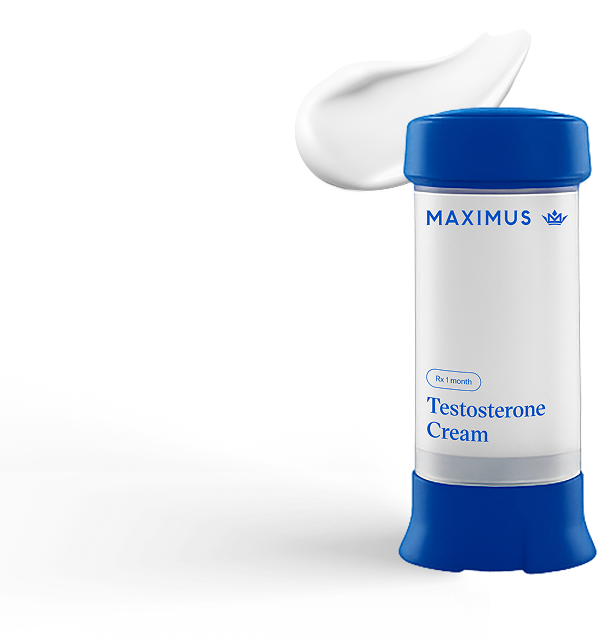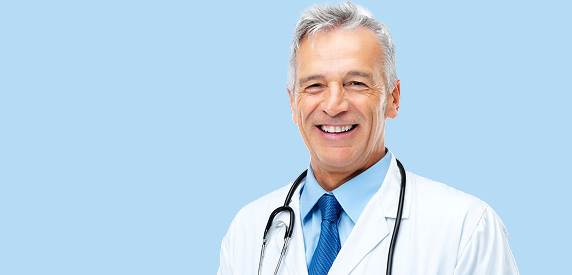Testosterone cream
Topical Testosterone with Enclomiphene: Preserving Male Fertility Markers

S. Cameron Sepah, Ph.D.1,2; Gabriel Alizaidy, M.D., M.S.1; Starling Krentz, M.S.1
1. Maximus, Los Angeles, CA, United States
2. University of California, San Francisco, Department of Psychiatry, San Francisco, CA, United States
Corresponding Author:
S. Cameron Sepah, Ph.D.
Email: cam@maximustribe.com
Abstract
Background: Testosterone therapy improves libido, strength, mood, and quality of life, but typically suppresses LH and FSH, reducing fertility. Prior Maximus studies showed that oral testosterone combined with enclomiphene can prevent this suppression. Whether this strategy applies to other forms has been unclear. Topical testosterone, in particular, is more potent and longer-acting than oral formulations. Because of its strength and duration of action, it is known to cause stronger suppression of the HPG axis, raising doubts about whether fertility signals could be preserved.
Objective: To evaluate whether enclomiphene can maintain gonadotropin production in men using topical testosterone.
Methods: Forty-five men with low testosterone were treated with 100mg daily topical testosterone plus 6.25mg, 12.5mg, or 25mg of enclomiphene. Hormone panels measured testosterone, estradiol, LH, FSH, and SHBG before and after treatment.
Results: At 6.25mg enclomiphene, LH and FSH declined by 89% and 75%, with nearly all patients suppressed. At 12.5–25mg, all patients maintained LH and FSH above fertility thresholds, while total testosterone increased by 163% and free testosterone by 216%. Patients with prior suppression from injectable testosterone also regained measurable LH and FSH.
Conclusion: Due to its strength and longer duration of action, topical testosterone strongly suppresses the HPG axis. However, adding sufficient enclomiphene (≥12.5mg) preserves LH and FSH while significantly raising testosterone. Building on earlier Maximus findings with oral testosterone, this is the first evidence that even highly suppressive topical formulations can be paired with enclomiphene to maintain fertility signals.
↑
Increase in free testosterone with topical testosterone + enclomiphene
↔
Of patients maintained LH & FSH above fertility thresholds at individualized dose
Background
Exogenous testosterone therapy is well established for raising serum testosterone in hypogonadal men. It can improve libido, strength, mood, erection quality, metabolism, athletic performance, body composition, and overall quality of life.1,2
The challenge is that traditional testosterone replacement feeds back negatively on the hypothalamic-pituitary-gonadal (HPG) axis.3 When the brain senses exogenous testosterone, it reduces gonadotropin-releasing hormone (GnRH), which in turn lowers luteinizing hormone (LH) and follicle-stimulating hormone (FSH). LH normally stimulates Leydig cells to produce testosterone, while FSH supports spermatogenesis through Sertoli cells. Once these hormones are suppressed, endogenous testosterone drops and fertility is compromised.
Earlier work at Maximus showed that oral testosterone can be paired with enclomiphene, a selective estrogen receptor modulator, to prevent this suppression.4 In those studies, even low doses of enclomiphene, such as 6.25 mg, were often enough to keep LH and FSH above clinically meaningful thresholds (1.8 IU/L for LH and 1.5 IU/L for FSH, though some consider 1.3 IU/L for LH acceptable).
Topical testosterone behaves differently. It has greater potency, a longer duration of action, does not require dietary fat for absorption, and enters the bloodstream more quickly, within about 2 hours compared to 3–4 hours for oral testosterone.5,6 Those same pharmacokinetic advantages mean it is also more suppressive to the HPG axis.3 The question we asked was whether enclomiphene could still protect fertility signals when testosterone delivery is this strong and sustained.
Objective
To evaluate whether enclomiphene can preserve gonadotropin production in men treated with 100 mg daily topical testosterone, and to identify what dose is necessary to achieve this effect.
Methods
We studied 45 men with symptoms of low testosterone. Each was treated with 100 mg of topical testosterone daily, combined with different doses of enclomiphene: 6.25 mg, 12.5 mg, or 25 mg.
Blood tests were performed before and after treatment to measure:
• Total testosterone
• Free testosterone
• Luteinizing hormone (LH)
• Follicle-stimulating hormone (FSH)
• Sex hormone-binding globulin (SHBG)
• Estradiol
Results
Hormone Levels at Different Enclomiphene Doses
At baseline, LH averaged 6.56 IU/L and FSH averaged 5.06 IU/L. With 6.25 mg enclomiphene, both hormones dropped sharply, while at 12.5–25 mg, they were not only preserved but returned to or above baseline levels. Testosterone levels rose in all groups, with free and total testosterone reaching more than double baseline values.
Average Hormone Values at Different Enclomiphene Doses with 100 mg Topical Testosterone
| Parameter | Baseline (Pre-Treatment) | 6.25 mg Enclomiphene | 12.5-25 mg Enclomiphene |
|---|---|---|---|
| LH (IU/L) | 6.56 | 0.71 | 7.26 |
| FSH (IU/L) | 5.06 | 1.29 | 6.38 |
| SHBG (nmol/L) | 39.56 | 36.28 | 42.72 |
| Estradiol (pg/mL) | 19.99 | 24.34 | 30.73 |
| Free Testosterone (pg/mL) | 85.91 | 265.34 | 271.69 |
| Total Testosterone (ng/dL) | 459.16 | 1190.88 | 1210.22 |
Average Changes in Hormone Levels from Baseline
When expressed as percentage change, the pattern was clear. At 6.25 mg, LH fell by 89.2 percent and FSH by 74.5 percent. At 12.5–25 mg, LH increased by 10.7 percent and FSH by 26.1 percent compared to baseline. Testosterone rose sharply across the board, with total testosterone up by 163 percent and free testosterone by 216 percent.
Average Changes in Hormone Levels from Baseline
| Parameter | Change with 6.25 mg | Change with 12.5-25 mg |
|---|---|---|
| LH (IU/L) | -5.85 (-89.2%) | 0.70 (+10.7%) |
| FSH (IU/L) | -3.77 (-74.5%) | 1.32 (+26.1%) |
| SHBG (nmol/L) | -3.28 (-8.3%) | 3.16 (+8.0%) |
| Estradiol (pg/mL) | 4.35 (+21.8%) | 10.74 (+53.7%) |
| Free Testosterone (pg/mL) | 179.43 (+208.9%) | 185.78 (+216.3%) |
| Total Testosterone (ng/dL) | 731.72 (+159.4%) | 751.06 (+163.6%) |
Individual Variability in Treatment Response
Group averages tell part of the story, but some patients showed far more dramatic changes. Several men had been on injectable testosterone without enclomiphene support and entered the study with nearly flatlined gonadotropins.
One patient, for example, presented with LH and FSH at 0.3 IU/L and a trough testosterone level of 231 ng/dL. After switching to topical testosterone with the appropriate enclomiphene dose, his LH rose to 3.7 IU/L, FSH to 2.9 IU/L, and his total testosterone reached 851 ng/dL.
These recoveries, especially in previously suppressed patients, shifted the group averages upward and showed that the right dose of enclomiphene can restore gonadotropin function even after prolonged suppression. Although individual responses varied, the consistent finding was that at least 12.5 mg, and in some cases 25 mg, was required to reliably protect fertility markers during topical testosterone treatment.
Suppression of the HPG axis is not driven by testosterone alone. Estrogen also plays important roles in feedback regulation.7 Differences in how patients respond to enclomiphene reflect these multiple pathways. While the specific pattern of recovery varied, every patient in our cohort demonstrated meaningful mitigation of suppression with the appropriate dose of enclomiphene.
Enclomiphene Dosage Requirements
At 6.25 mg, suppression was nearly universal. Only one patient, or 2.2 percent, kept LH and FSH above fertility thresholds. At 12.5 mg, 28 patients, or 62.2 percent, reached target values. The remaining 17 patients, 37.8 percent of the group, required 25 mg. Once doses were individualized, every patient in the cohort maintained LH and FSH above the clinically significant thresholds.
Enclomiphene Dosage Distribution and Effectiveness
| Enclomiphene Dose | Number of Patients | Percentage | LH/FSH Above Threshold |
|---|---|---|---|
| 6.25 mg | 45 | 100% | 1 patient (2.2%) |
| 12.5 mg | 28 | 62.20% | 28 patients (100%) |
| 25 mg | 17 | 37.80% | 17 patients (100%) |
| Total at tailored dose | 45 | 100% | 45 patients (100%) |
Conclusion
Because of its potency and longer duration of action, topical testosterone strongly suppresses the HPG axis. Our findings show that this suppression can be overcome when the right amount of enclomiphene is added. A dose of 12.5 mg was sufficient for most men, though 25 mg was sometimes required.
The lower dose of 6.25 mg was inadequate, reducing LH by nearly 90 percent and FSH by 75 percent. By contrast, higher doses not only maintained but on average increased gonadotropin levels while more than doubling testosterone. Patients previously suppressed by injectable testosterone also regained fertility markers under this regimen.
This approach offers the therapeutic benefits of topical testosterone without the usual trade-offs of testicular atrophy and infertility. Building on earlier Maximus research with oral testosterone,4 these results provide the first evidence that even highly suppressive topical formulations can be paired with enclomiphene to preserve fertility signals while raising testosterone.
References
- Basaria S. Male hypogonadism. Lancet. 2014;383(9924):1250-1263.
- Corona G, Rastrelli G, Morgentaler A, Sforza A, Mannucci E, Maggi M. Meta-analysis of results of testosterone therapy on sexual function based on international index of erectile function scores. Eur Urol. 2017;72(6):1000-1011.
- Masterson TA, Turner D, Vo D, et al. The effect of longer-acting vs shorter-acting testosterone therapy on follicle stimulating hormone and luteinizing hormone. Sex Med Rev. 2021;9(1):143-148.
- Sepah SC, Alizaidy G, Henry H, Boerger N. Maximus' Oral TRT Plus Protocol: a highly efficacious and non-suppressive approach to significantly enhance testosterone and quality of life in hypogonadal and eugonadal men. Maximus; 2025.
- Iyer R, Mok SF, Savkovic S, et al. Pharmacokinetics of testosterone cream applied to scrotal skin. Andrology. 2017;5(4):725-731. doi:10.1111/andr.12357
- Trevaskis NL, Charman WN, Porter CJ. Lipid-based delivery systems and intestinal lymphatic drug transport: a mechanistic update. Adv Drug Deliv Rev. 2008;60(6):702-716.
- Raven G, de Jong FH, Kaufman JM, de Ronde W. In men, peripheral estradiol levels directly reflect the action of estrogens at the hypothalamo-pituitary level to inhibit gonadotropin secretion. J Clin Endocrinol Metab. 2006;91(9):3324-3328. doi:10.1210/jc.2006-0462






